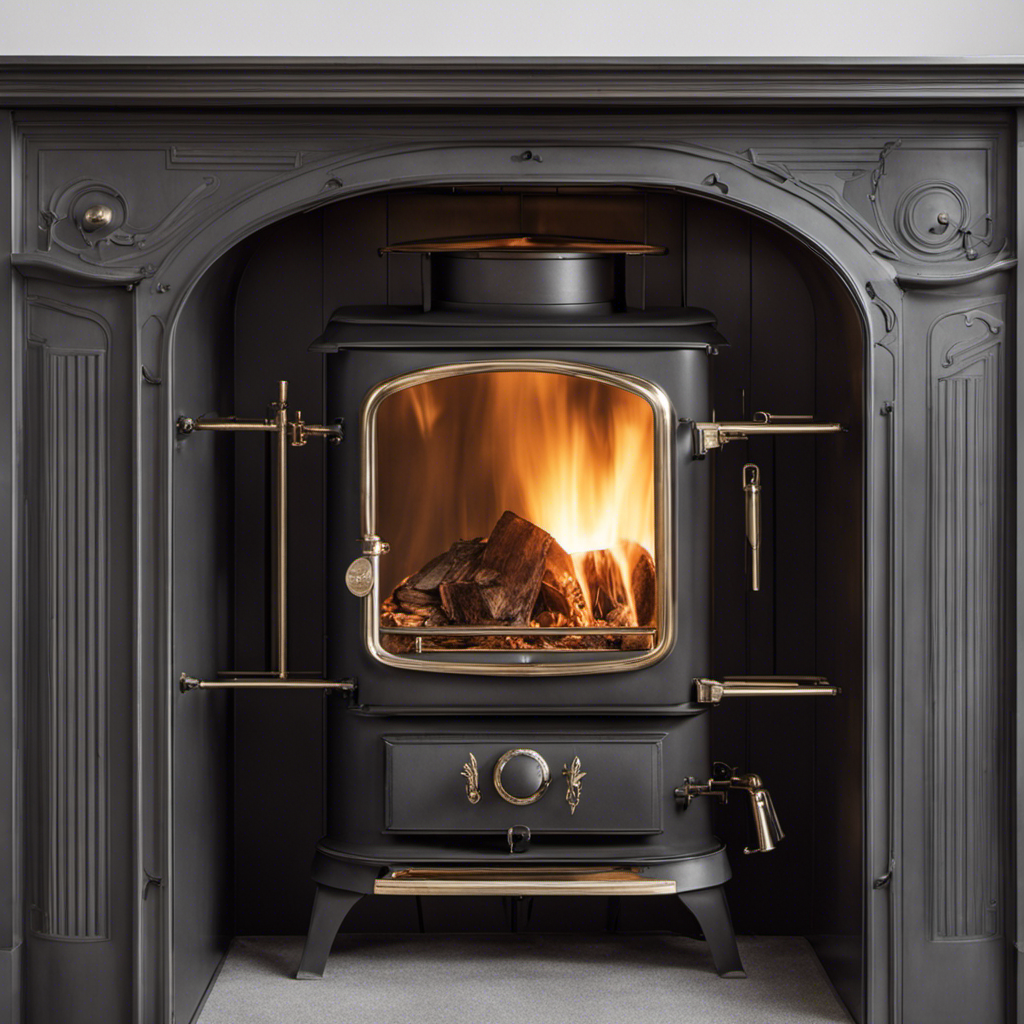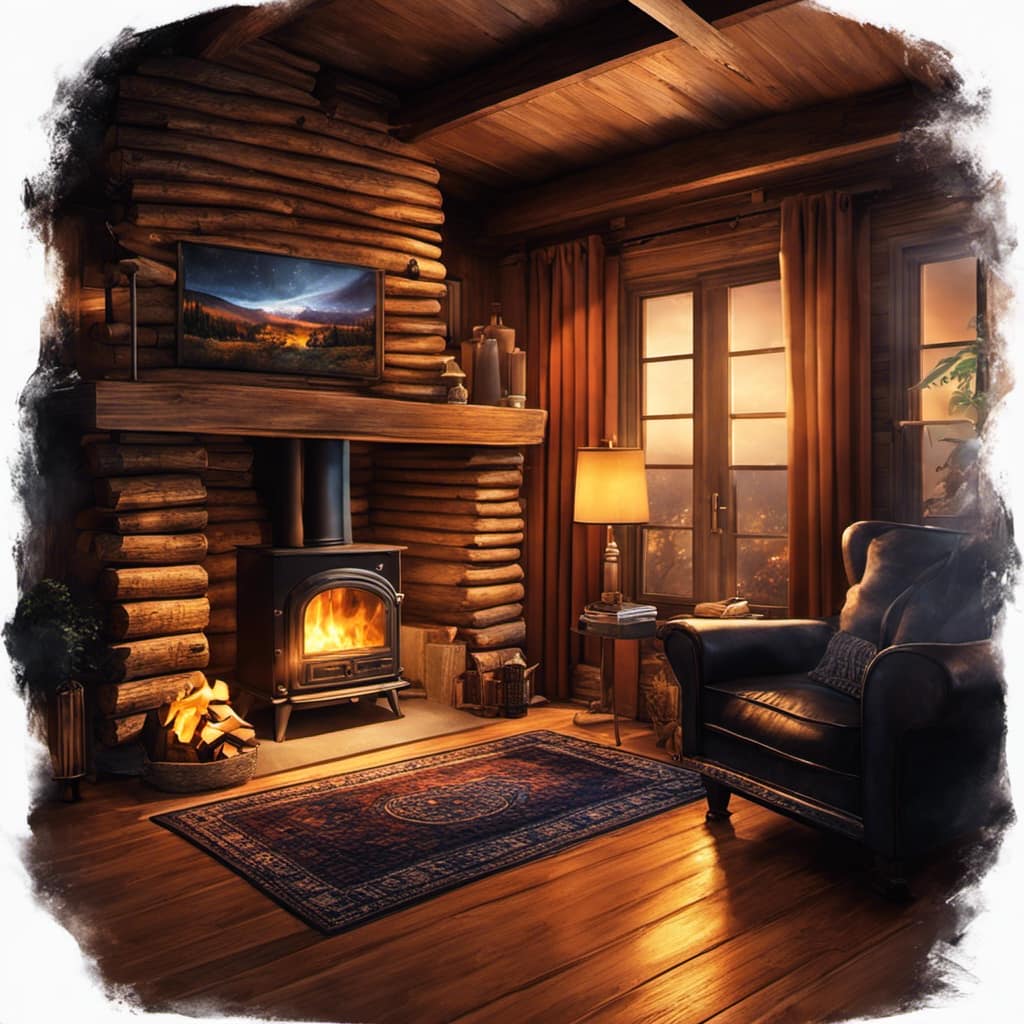
I have always been curious about the required height for the chimney of my wood stove. It appears that the decision is not solely based on personal preference. Instead, various factors are involved, including the specific model of your wood stove and the building codes relevant to your area.
Choosing the right chimney height is crucial for safety and efficiency. In this article, I’ll break down the steps to determine the proper height and provide tips for maintenance.
Let’s get started!
Key Takeaways
- Chimney height regulations vary based on location, fuel type, proximity to buildings, and chimney design.
- Compliance with chimney height regulations and consideration of weather conditions are crucial for safe and effective wood stove operation.
- Local building codes dictate minimum height requirements, materials, and clearances for chimney installation.
- Consultation with a professional or manufacturer’s recommendations can determine the optimal chimney height for a specific wood stove.
Factors Affecting Chimney Height
I’ve been researching the factors that can affect the height of my chimney.
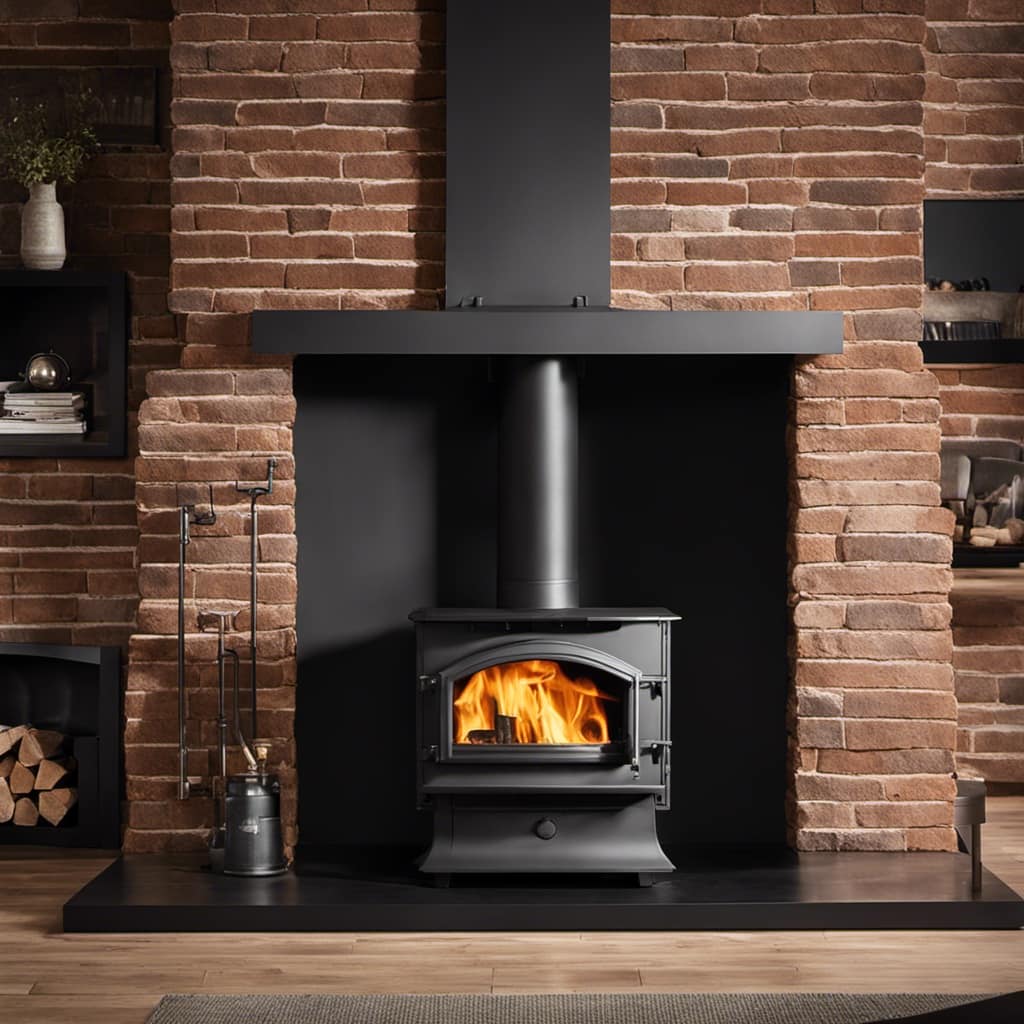
One important factor to consider is chimney height regulations. These regulations vary depending on your location, and it’s crucial to comply with them to ensure the safe and efficient operation of your wood stove. The height requirements are usually determined by the type of fuel being used, the proximity to neighboring buildings, and the overall design of your chimney system.
Another factor to consider is the impact of weather conditions. Strong winds can create a downdraft, which can cause smoke and dangerous gases to be pushed back into your home. By having a taller chimney, you can mitigate the effects of wind and maintain proper ventilation.
It’s essential to follow both chimney height regulations and consider the impact of weather conditions to ensure your wood stove operates safely and effectively.
Understanding Local Building Codes
While researching the factors affecting chimney height, I discovered the importance of understanding local building codes and how they can impact the design and installation of my wood stove chimney.
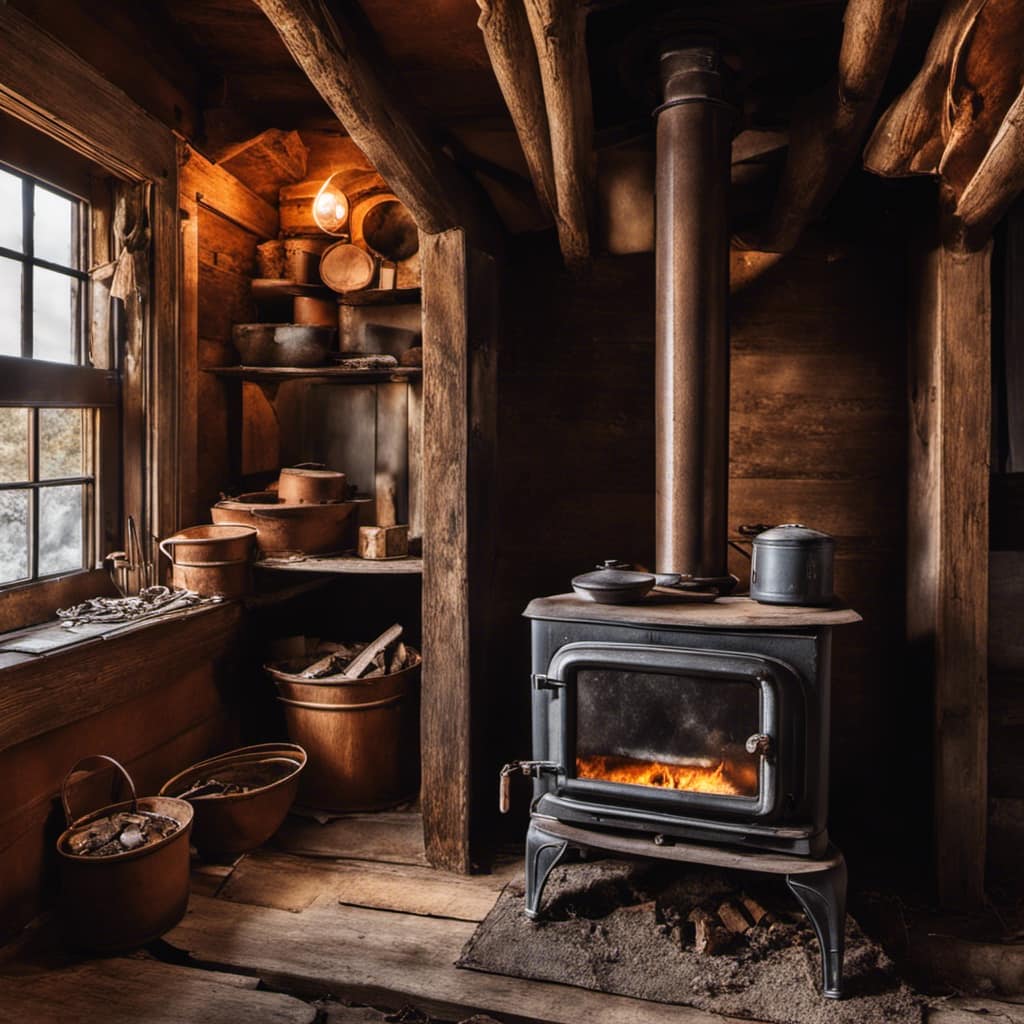
Local building codes play a crucial role in ensuring the safety and efficiency of chimney systems. They dictate the minimum height requirements, materials, and clearances necessary for proper installation. Understanding chimney materials is essential for complying with these codes.
For example, some local codes may require the use of specific chimney materials, such as stainless steel or masonry, to withstand high temperatures and corrosive byproducts.
Additionally, the role of chimney height in draft control is significant. A taller chimney creates more draft, which helps remove smoke and combustion gases effectively. Local building codes provide guidelines on the optimal chimney height to ensure proper draft and prevent backdrafting.
Therefore, it’s crucial to thoroughly understand and adhere to local building codes when designing and installing a wood stove chimney.
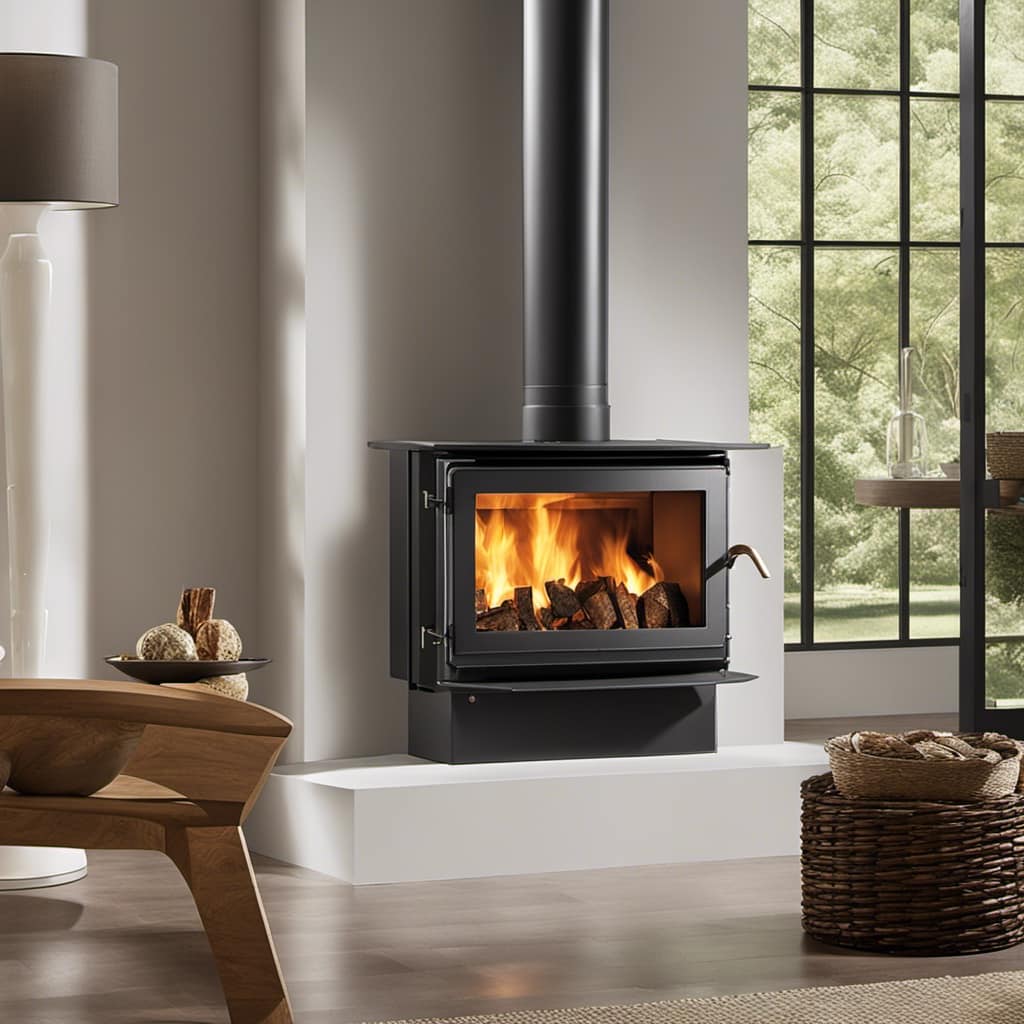
Choosing the Right Wood Stove for Your Chimney
I’m considering different options, but I think a cast iron wood stove would be the best choice for my chimney.
When it comes to wood stove compatibility, it’s crucial to ensure that the stove you choose is suitable for your chimney setup. One of the key factors to consider is the chimney height guidelines. The height of your chimney plays a vital role in ensuring the safe and efficient operation of your wood stove.
The guidelines typically vary based on factors such as the type of wood stove, the size of the firebox, and the overall height of your house. It’s important to consult with a professional or refer to the manufacturer’s recommendations to determine the optimal chimney height for your specific wood stove.
Proper Sizing and Installation of the Chimney
I carefully followed the manufacturer’s guidelines to ensure the proper sizing and installation of my chimney.
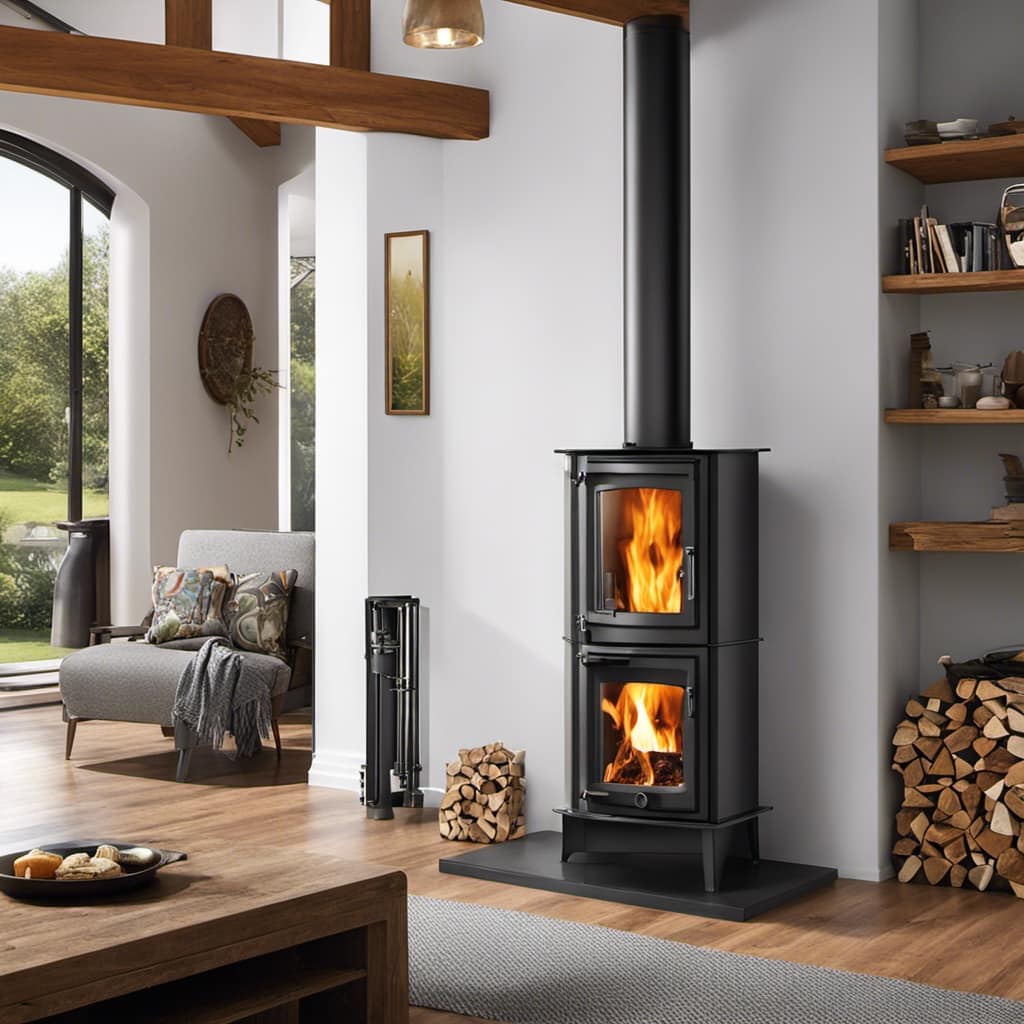
When it comes to chimney height regulations, it’s important to comply with local building codes. The height of your chimney plays a crucial role in ensuring proper draft and preventing smoke from entering your home. The chimney installation process involves determining the right height based on factors such as the height of the roof, nearby obstructions, and the type of stove or fireplace being used. Additionally, it’s essential to consider the minimum clearance requirements from combustible materials.
Regular maintenance and upkeep are necessary to ensure a safe chimney. This includes regular inspections, cleaning of creosote buildup, and ensuring proper functioning of the chimney cap and spark arrestor.
Maintenance and Upkeep for a Safe Chimney
To ensure a safe chimney, I regularly schedule inspections and cleanings to maintain its proper functioning.
Chimney cleaning and inspections are essential to prevent chimney fires and ensure the efficient operation of the chimney system. During the cleaning process, a professional chimney sweep will remove creosote buildup, which is a major cause of chimney fires. They’ll also check for any blockages or structural issues that could impede the chimney’s airflow.
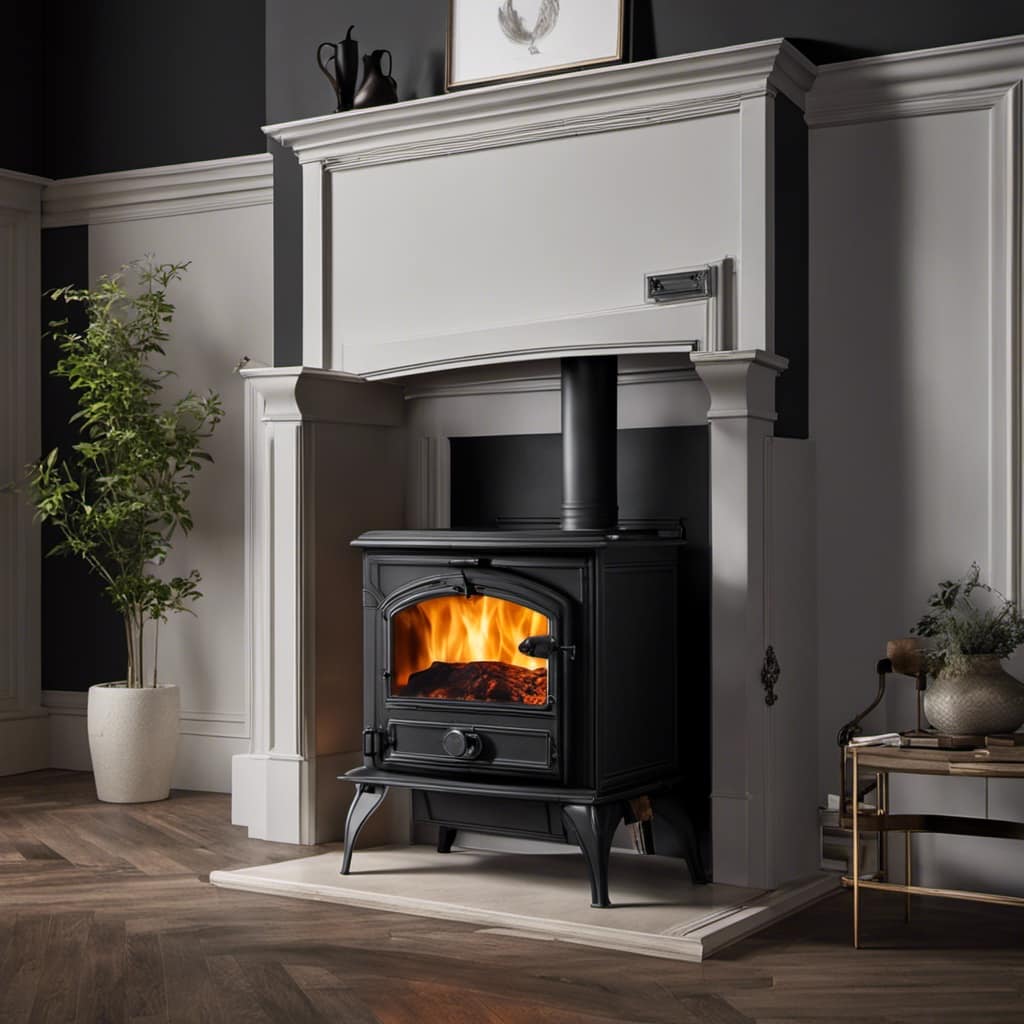
Regular inspections are crucial because they allow for the early detection of any damage or deterioration. This includes checking the chimney liner, masonry, and chimney cap for any signs of wear or damage.
Frequently Asked Questions
Can I Install a Wood Stove Chimney Without Considering Local Building Codes?
No, it is not advisable to install a wood stove chimney without considering local building codes. It is important to comply with regulations to ensure safety and prevent common mistakes when installing a wood stove chimney in rural areas.
How Often Should I Clean My Wood Stove Chimney?
Inspecting your wood stove chimney regularly is crucial for safety. Neglecting to clean it can lead to dangerous consequences, such as chimney fires or carbon monoxide poisoning. It is recommended to clean your chimney at least once a year.
Can I Use My Existing Chimney for a Wood Stove Installation?
Yes, you can use your existing chimney for a wood stove installation. However, there are potential issues to consider such as sizing, clearance requirements, and structural integrity. Alternatives include installing a new chimney or using a prefabricated chimney system.
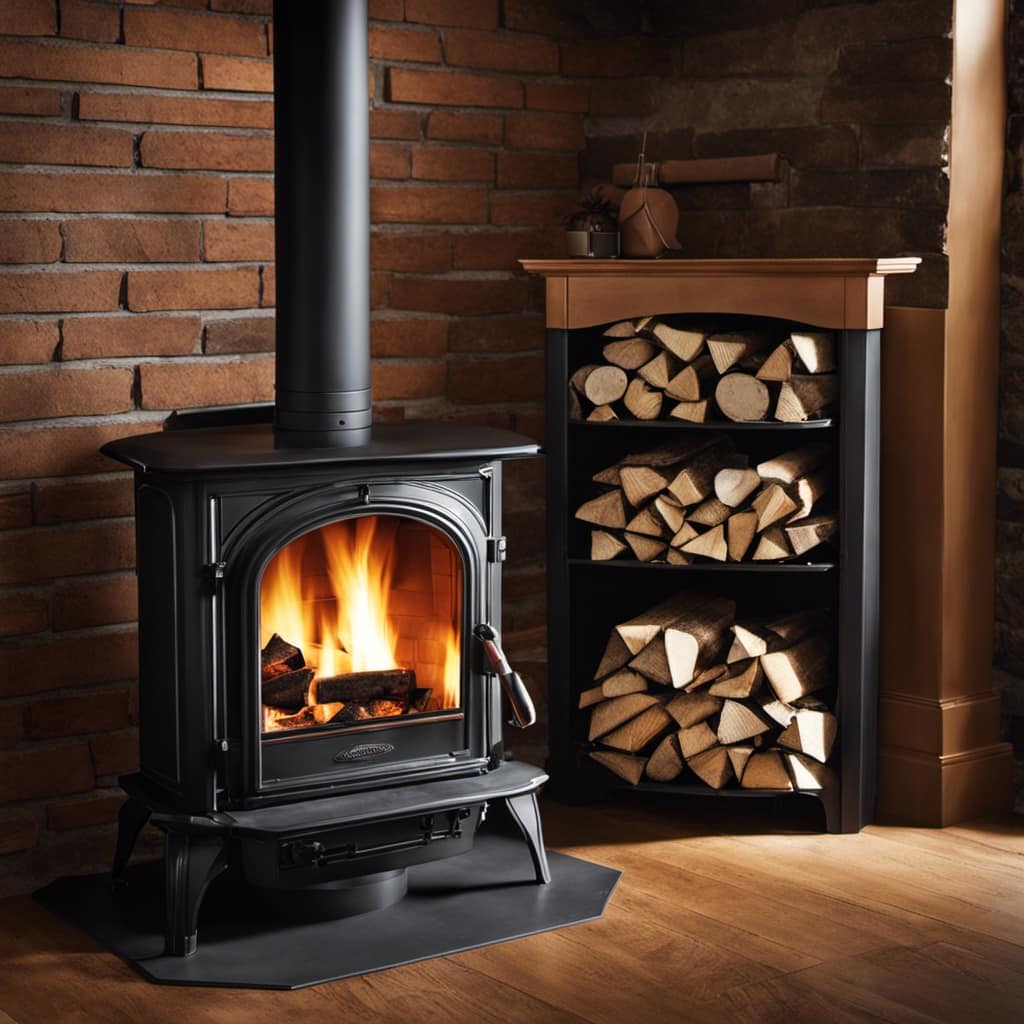
Is It Necessary to Have a Chimney Cap on My Wood Stove Chimney?
It’s important to have a chimney cap on your wood stove chimney for several reasons. Pros include preventing rain, snow, and debris from entering the chimney, while cons include potential airflow restrictions. Choosing the right size chimney cap is crucial for proper functionality.
What Are the Common Signs of a Chimney That Needs Repair or Maintenance?
Signs of chimney damage include cracks, crumbling mortar, and excessive soot buildup. Regular maintenance is vital to prevent costly repairs. As a homeowner, I prioritize chimney inspections to ensure safety and efficiency.
Conclusion
In conclusion, the height of your wood stove chimney is determined by various factors, including local building codes and the type of wood stove you choose. It’s crucial to carefully follow proper sizing and installation guidelines to ensure optimal performance and safety. Regular maintenance and upkeep are also essential for a safe chimney.
Interestingly, did you know that according to a study by the National Fire Protection Association, the leading cause of home heating-related fires is failure to clean chimneys?
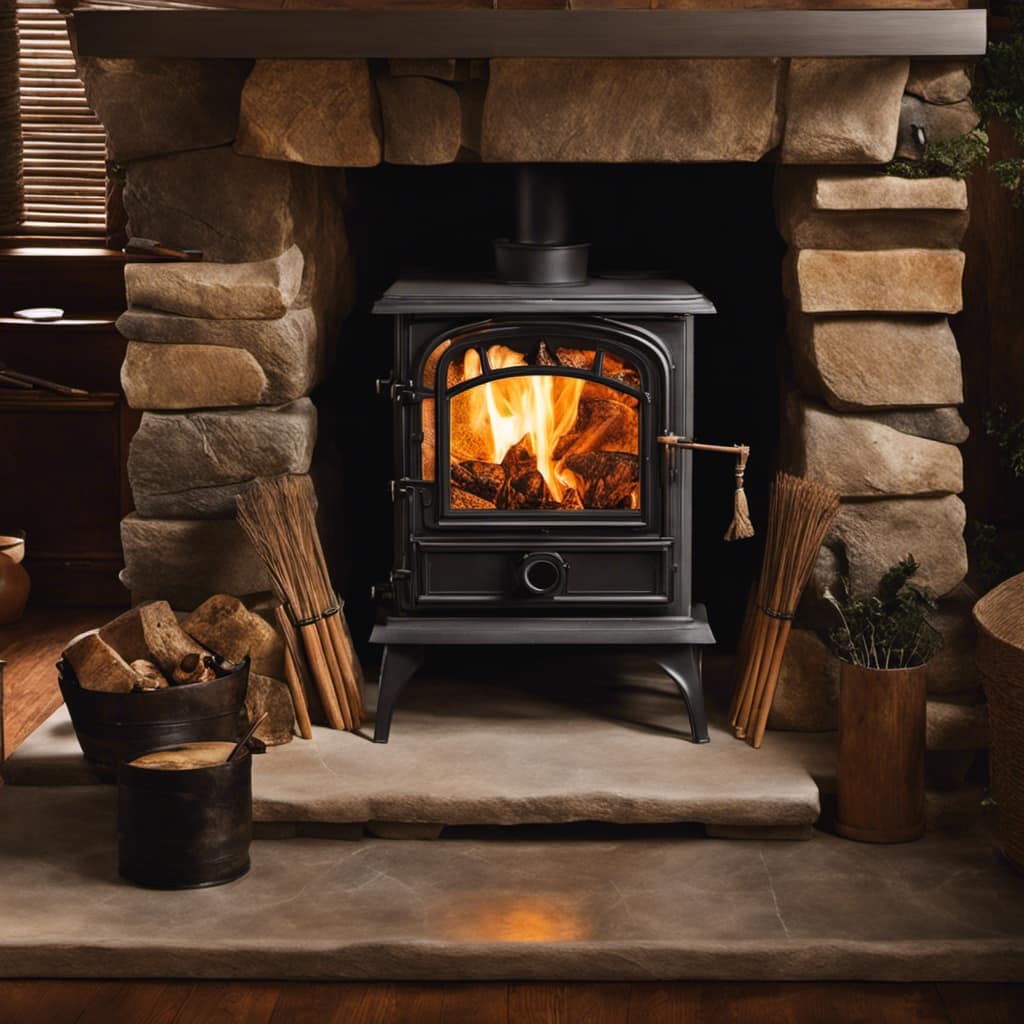
Growing up surrounded by the vast beauty of nature, Sierra was always drawn to the call of the wild. While others sought the comfort of the familiar, she ventured out, embracing the unpredictable and finding stories in the heartbeat of nature.
At the epicenter of every remarkable venture lies a dynamic team—a fusion of diverse talents, visions, and passions. The essence of Best Small Wood Stoves is crafted and refined by such a trio: Sierra, Logan, and Terra. Their collective expertise has transformed the platform into a leading authority on small wood stoves, radiating warmth and knowledge in equal measure.






